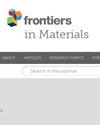Dynamic modulus characteristics and prediction model of semi-flexible materials filled with high-performance cement paste
IF 2.6
4区 材料科学
Q3 MATERIALS SCIENCE, MULTIDISCIPLINARY
引用次数: 0
Abstract
The dynamic modulus of asphalt mixture is an important factor in the design of asphalt pavement, and many scholars have proposed different models for estimating the dynamic modulus of asphalt mixture, but there are almost no studies on the prediction of the dynamic modulus of semi-flexible materials. In order to analyze and estimate the dynamic modulus of semi-flexible materials, we set up a high-performance cementitious paste (HPCP) semi-flexible material and a reference group Stone Mastic Asphalt (SMA-16) under multiple conditions, first measured its dynamic modulus in the laboratory, and analyzed the dynamic modulus characteristics of the material, and then used the equation the estimation equation proposed by Witczak et al. (Witczak1-37A) as a benchmark to introduce a new parameter, grouting mass ratio (Pb) to develop a Witczak-G prediction model to compare and validate the predicted dynamic modulus with the measured values. The results show that compared with SMA-16, HPCP semi-flexible material exhibits higher dynamic modulus and lower phase angle, and its temperature sensitivity and deformation resistance are significantly better than those of SMA-16. Under the influence of porosity and Pb factor, the dynamic modulus is positively correlated with both factors, and the phase angle increases first and then decreases, showing strong elastic properties. In this paper, we propose a dynamic modulus prediction model based on viscosity and Pb, Witczak-G, which predicts the highest coefficient of determination (R2) of the predicted dynamic modulus as high as 0.99 after initial fitting and validation, which indicates that the Witczak-G model is suitable for predicting the dynamic modulus of semi-flexible materials injected with HPCP.填充高性能水泥浆的半柔性材料的动态模量特性和预测模型
沥青混合料的动模量是沥青路面设计中的一个重要因素,许多学者提出了不同的沥青混合料动模量估算模型,但对半柔性材料动模量的预测研究几乎没有。为了分析和估算半柔性材料的动态模量,我们设置了高性能水泥基浆(HPCP)半柔性材料和石子玛蹄脂沥青(SMA-16)参比组在多种条件下的动态模量,首先在实验室测量了其动态模量,分析了材料的动态模量特性,然后利用 Witczak 等人提出的估算方程(Witczak1-37)进行了分析。(Witczak1-37A)为基准,引入新参数--灌浆质量比(Pb),建立 Witczak-G 预测模型,将预测的动态模量与测量值进行比较和验证。结果表明,与 SMA-16 相比,HPCP 半柔性材料表现出更高的动态模量和更低的相位角,其温度敏感性和抗变形能力明显优于 SMA-16。在孔隙率和 Pb 因子的影响下,动态模量与两个因子呈正相关,相位角先增大后减小,表现出较强的弹性特性。本文提出了基于粘度和 Pb 的动态模量预测模型 Witczak-G,经过初步拟合和验证,预测动态模量的最高决定系数(R2)高达 0.99,这表明 Witczak-G 模型适用于预测注入 HPCP 的半柔性材料的动态模量。
本文章由计算机程序翻译,如有差异,请以英文原文为准。
求助全文
约1分钟内获得全文
求助全文
来源期刊

Frontiers in Materials
Materials Science-Materials Science (miscellaneous)
CiteScore
4.80
自引率
6.20%
发文量
749
审稿时长
12 weeks
期刊介绍:
Frontiers in Materials is a high visibility journal publishing rigorously peer-reviewed research across the entire breadth of materials science and engineering. This interdisciplinary open-access journal is at the forefront of disseminating and communicating scientific knowledge and impactful discoveries to researchers across academia and industry, and the public worldwide.
Founded upon a research community driven approach, this Journal provides a balanced and comprehensive offering of Specialty Sections, each of which has a dedicated Editorial Board of leading experts in the respective field.
 求助内容:
求助内容: 应助结果提醒方式:
应助结果提醒方式:


